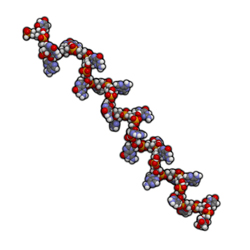Researching the wonders of RNA
Genetic material that carries the basic code for development of the organism can either be RNA, or in the main, DNA. RNA viruses are significant in terms of human health. Included are the hepatitis viruses, HIV, influenza and polio. Aware of the biomedical significance of RNA viruses, the 'Functional and structural genomics of viral RNA' (FSG-V-RNA) project aimed to generate more knowledge on the functional and structural genomics of HIV, and hepatitis B and C (HBV and HCV, respectively). The focus of the EU-funded project rested on new methods and tools for analysis of not only RNA but RNA-protein complexes as applied to vital functions. The multidisciplinary research team that included an SME also implemented complementary screening techniques and structural analysis of RNA complexes to facilitate the identification of appropriate antiviral compounds. The novel tools developed by the FSG-V-RNA project have the potential to correlate structure and function of RNA molecules and identify inhibitors that will qualify for drug screening against RNA viruses. More generally, the tools will enhance basic research on this small but extremely significant group of molecules. Functions include DNA translation and splicing of an RNA species before it can be used to produce the correct protein. Recently discovered are non-coding RNAs that are essential for regulation after gene transcription. Opening up and extending the research on this functionally diverse group of molecules will help to ensure that European scientists can push out the boundaries in genomic and proteomic research. Novel drug therapies will no doubt follow and also a more in-depth appreciation of the complexities of cell biochemistry.







